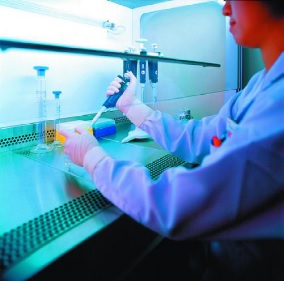Stem cell research is a controversial subject, but the burgeoning scientific field is yielding amazing results. Scientists have already used stem cells in cancer treatments, including bone marrow transplants for leukemia patients. The field of research is growing rapidly, and stem cell technology shows innovative results. Some of our toughest medical problems have potential solutions in stem cell research.
Cures for Autoimmune Diseases

Image via Flickr by Tareq Salahuddin
MS, arthritis, diabetes, and lupus are autoimmune diseases without cures. The answer may lie in bone marrow stem cells. Transplants of healthy bone marrow stem cells into individuals with autoimmune disorders have yielded fantastic results. However, the procedure remains dangerous because the patient’s current immune system needs to be totally eradicated before the new stem cells can take effect; the procedure carries a 20 percent risk of death. Current research investigates antibodies that would attack the malfunctioning immune cells, making room for the bone marrow transplant without the need for immune stripping.
Chimera Animals Growing Human Tissue
While it sounds like a science fiction novel, the idea of inserting human tissue (including organs) into an animal isn’t new, and it isn’t fiction, either. Scientists have been exploring a branch of stem cell research that would enable them to implant human tissue into animal embryos, creating chimeras growing human organs that could then be used for transplant. The National Institute of Health recently green-lighted giving federal money to scientists to create these chimera embryos. The government will closely monitor the conditions of this research.
Children Biologically Related to Both Same-Sex Parents
With the most advanced IVF procedures, parenting options have opened up for same-sex couples who want a child biologically related to one member of the partnership. One roadblock remains: conceiving a child that’s biologically related to both parents. Stem cell research is getting closer to the point where certain normal cells (skin cells and fibroblasts) can become embryonic cells. New scientific research suggests these embryonic stem cells can then become eggs or sperm. As the scientific community continues to research stem cell applications, gay couples come closer to the dream of having a child biologically related to both parents.
Retina and Optic Nerve Regrowth
When nerve damage and cell damage cause blindness, as is the case with diseases like macular degeneration, no cure is available to restore vision in humans. Scientists, inspired by animals capable of re-growing their eye tissue, are developing a number of studies aiming at re-growing retina and optic nerve cells. One of those studies involves stem cells. Right now scientists have already turned a stem cell into a photoreceptor, but the technology to attach that receptor to the eye doesn’t exist. Molecule and DNA experimentation may lead to the cells connecting to the rest of the eye.
These advances sound like they belong in the realm of science fiction, but in the next few decades, more research like this will happen. Diseases we’ve written off as incurable may finally have working treatments, and problems we thought were insurmountable might finally crumble under stem cell technology. Now is a great time to be alive if you are working in the health sector…